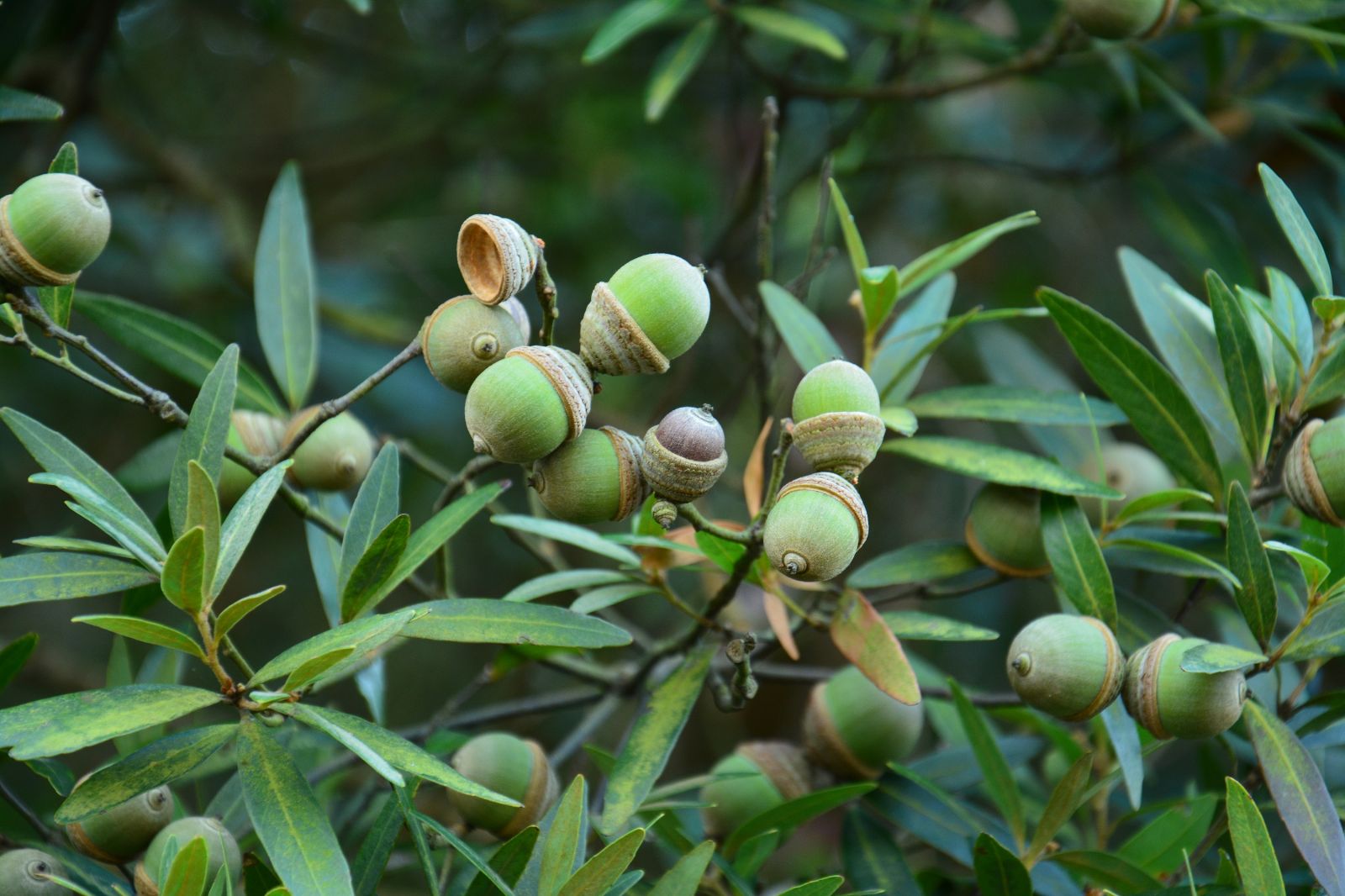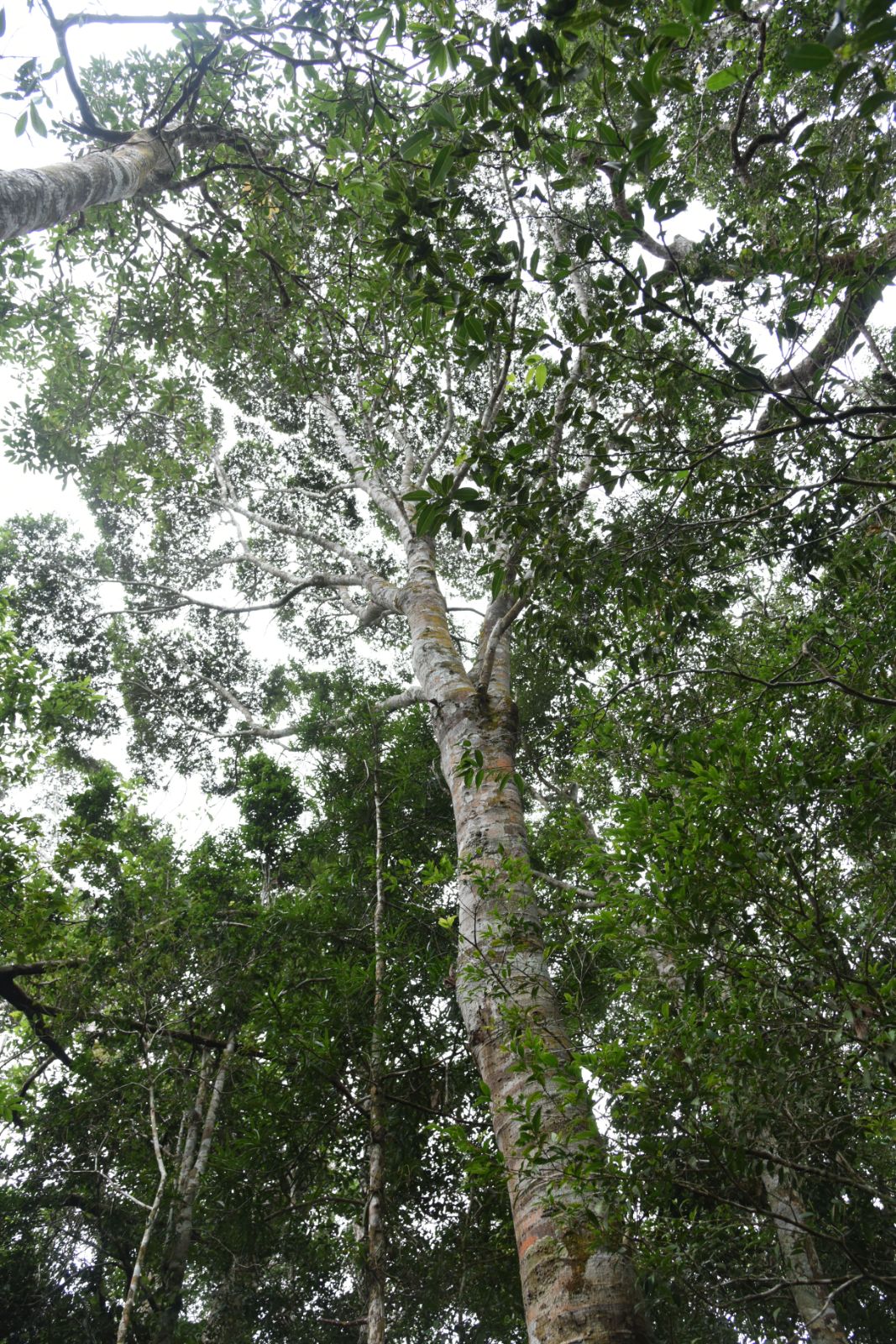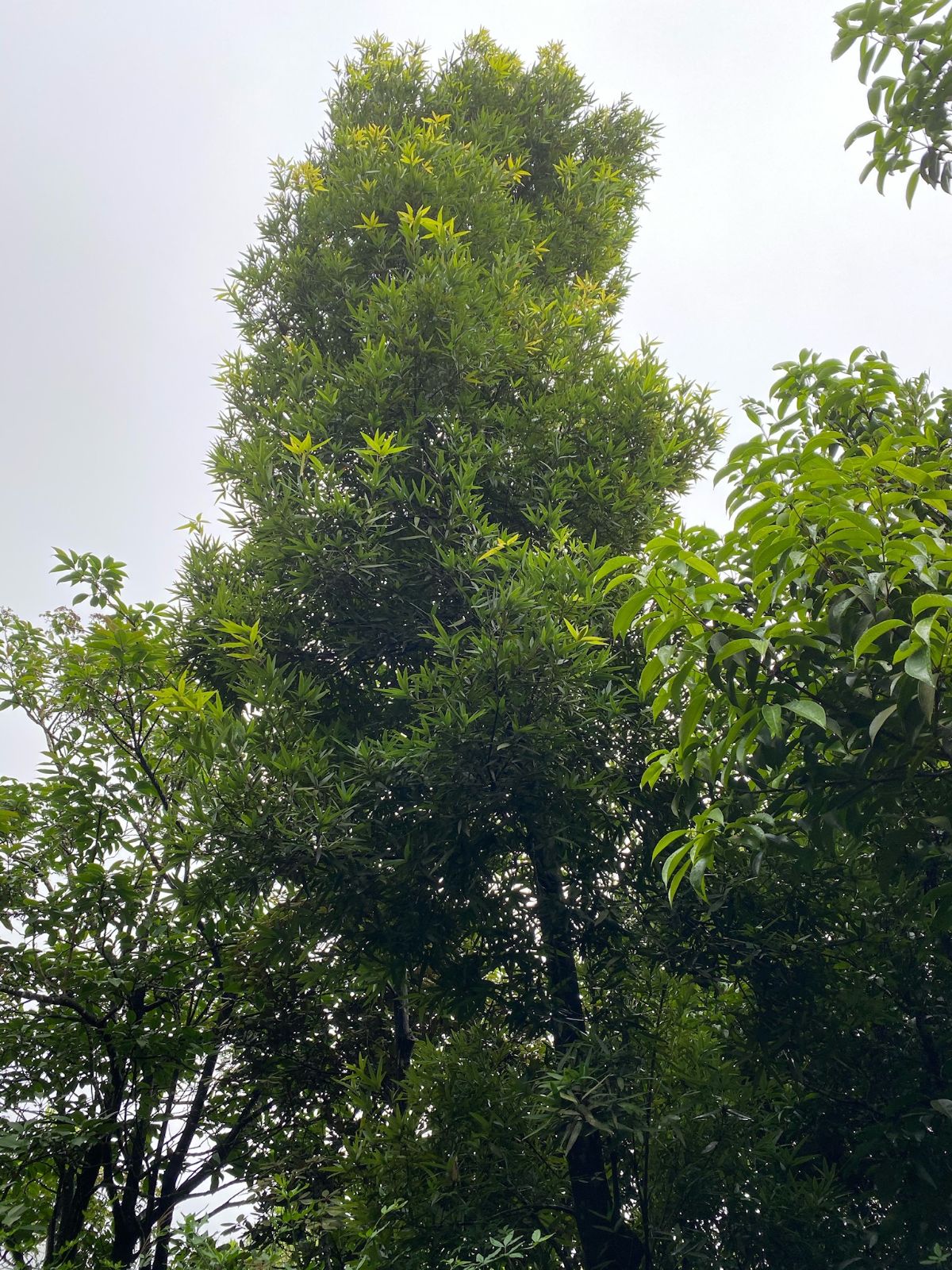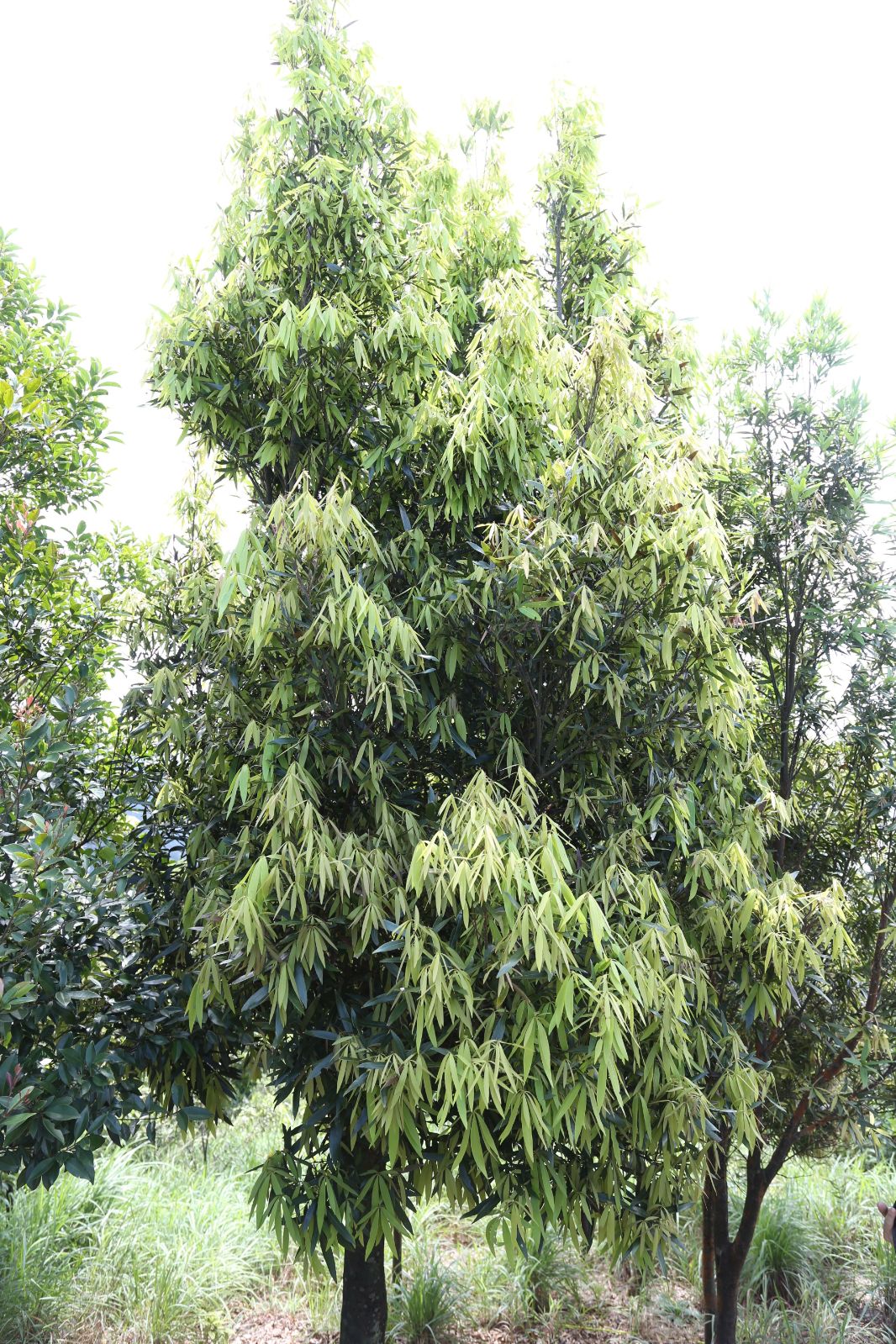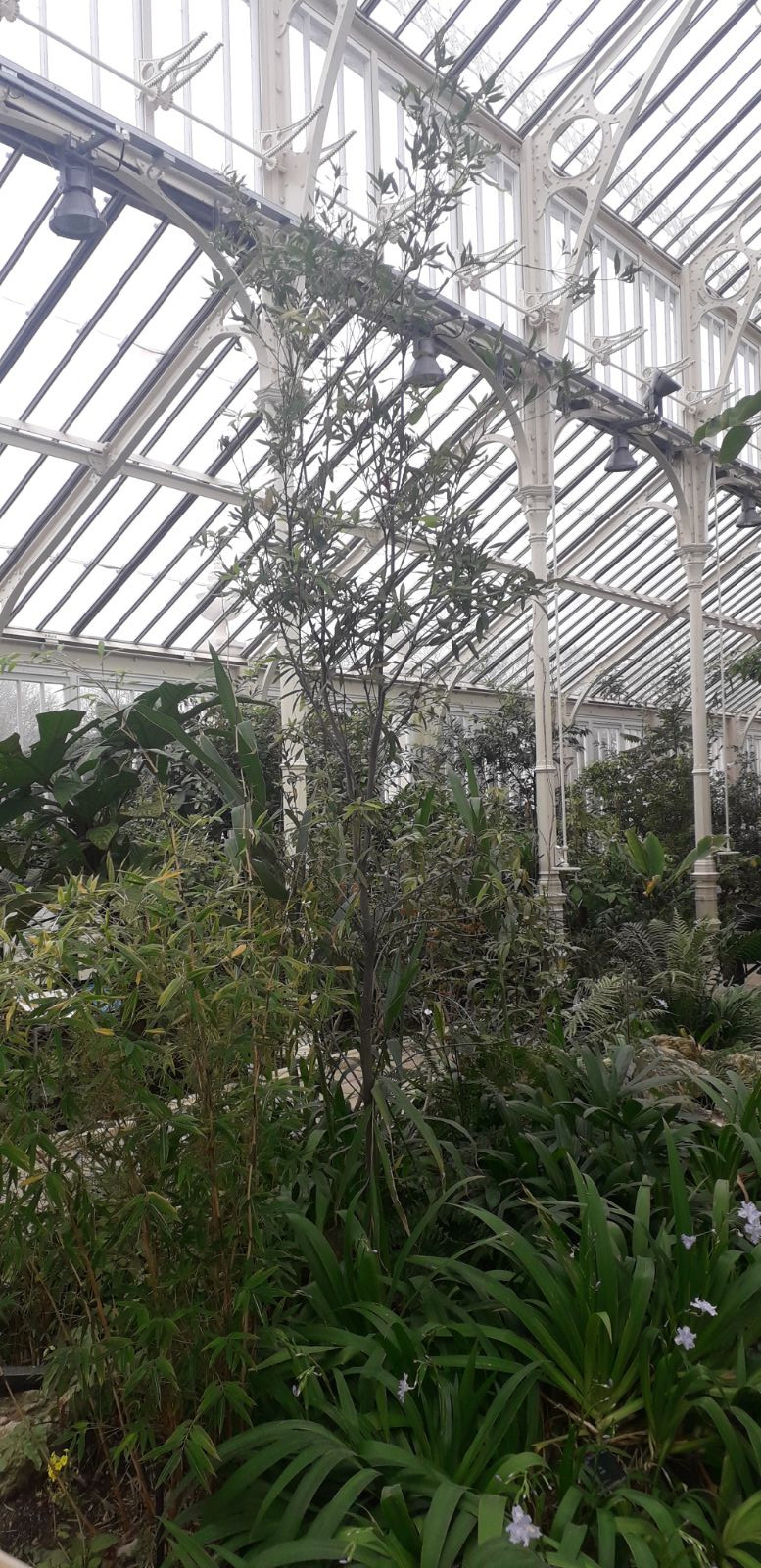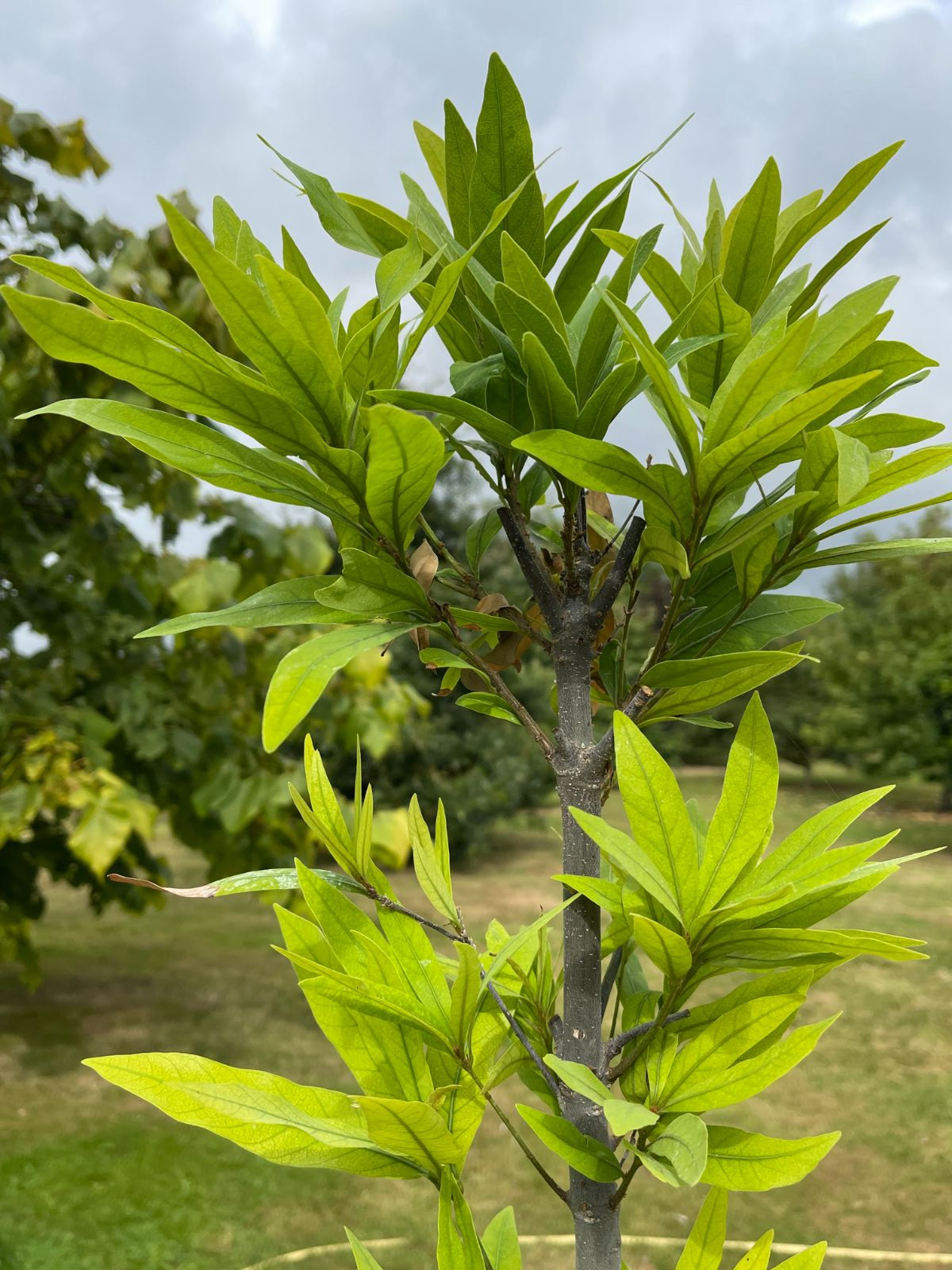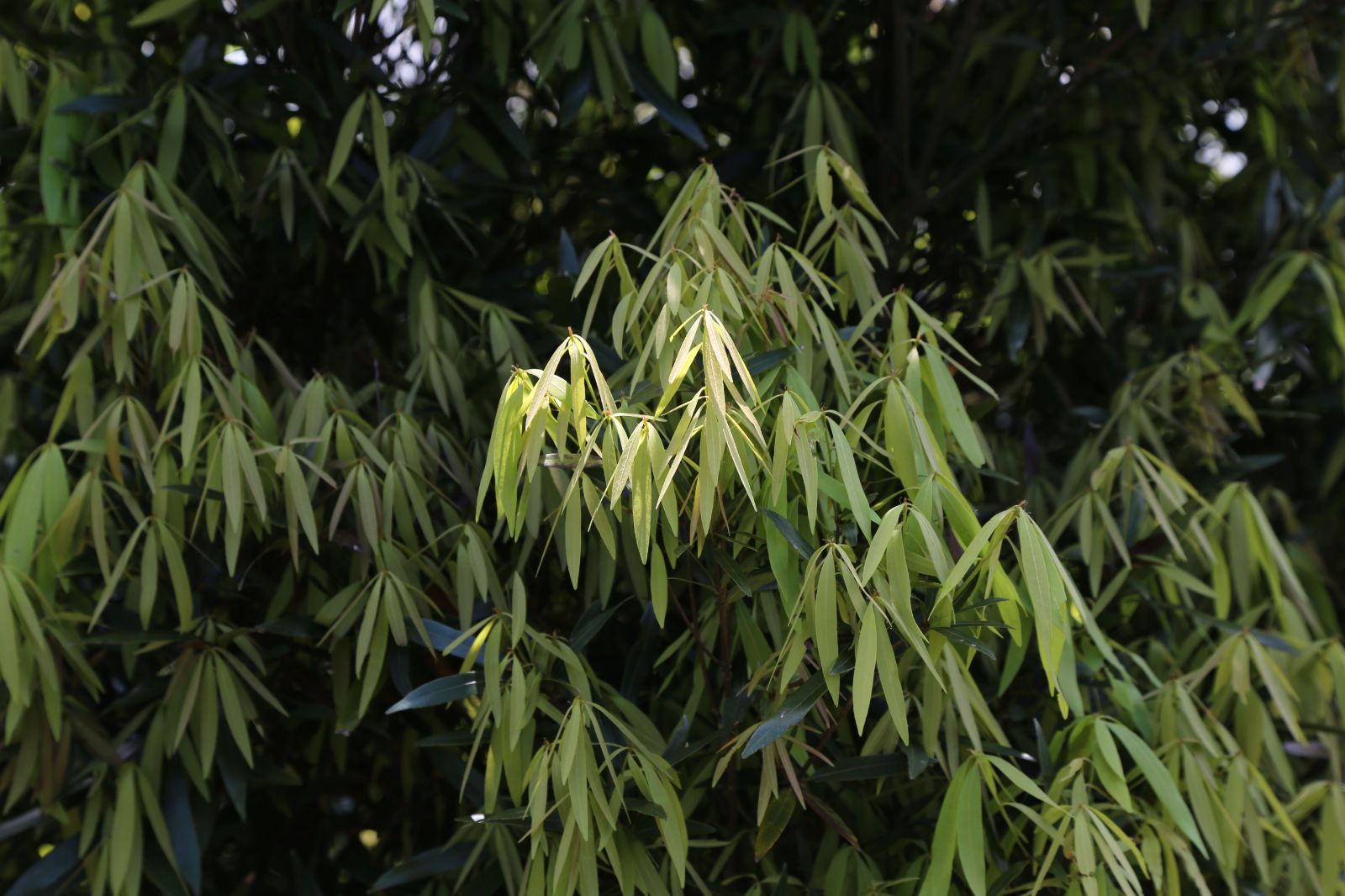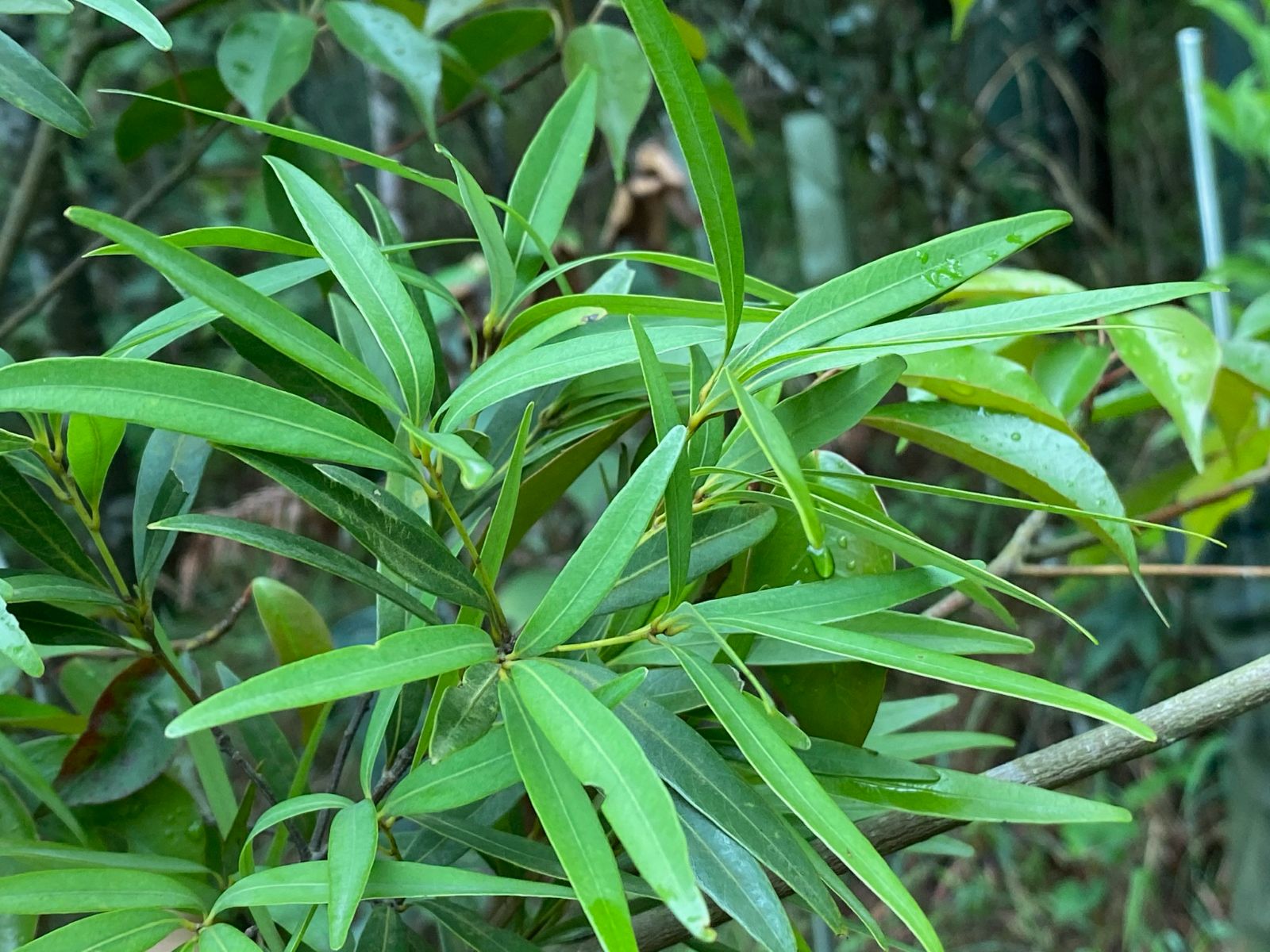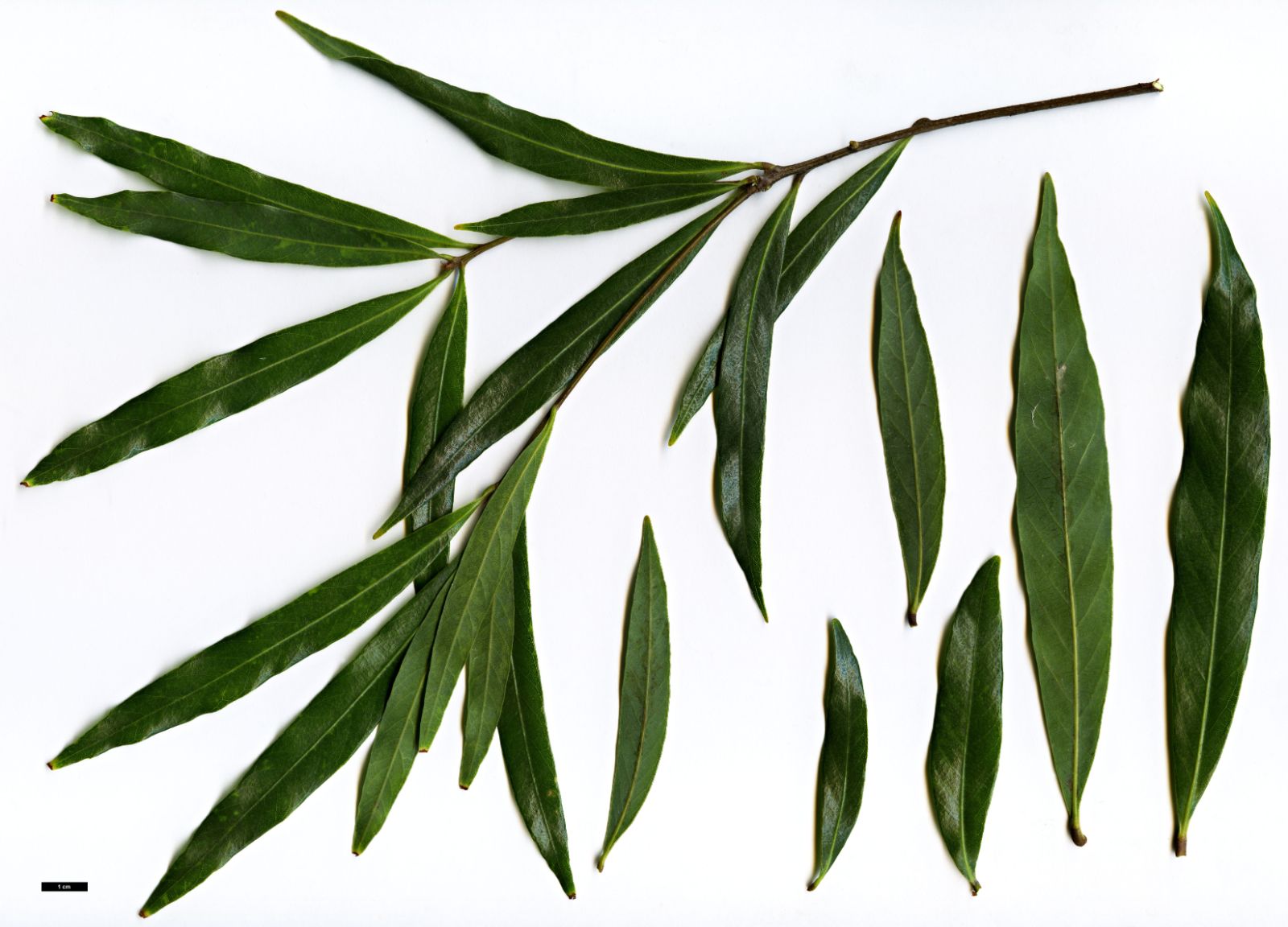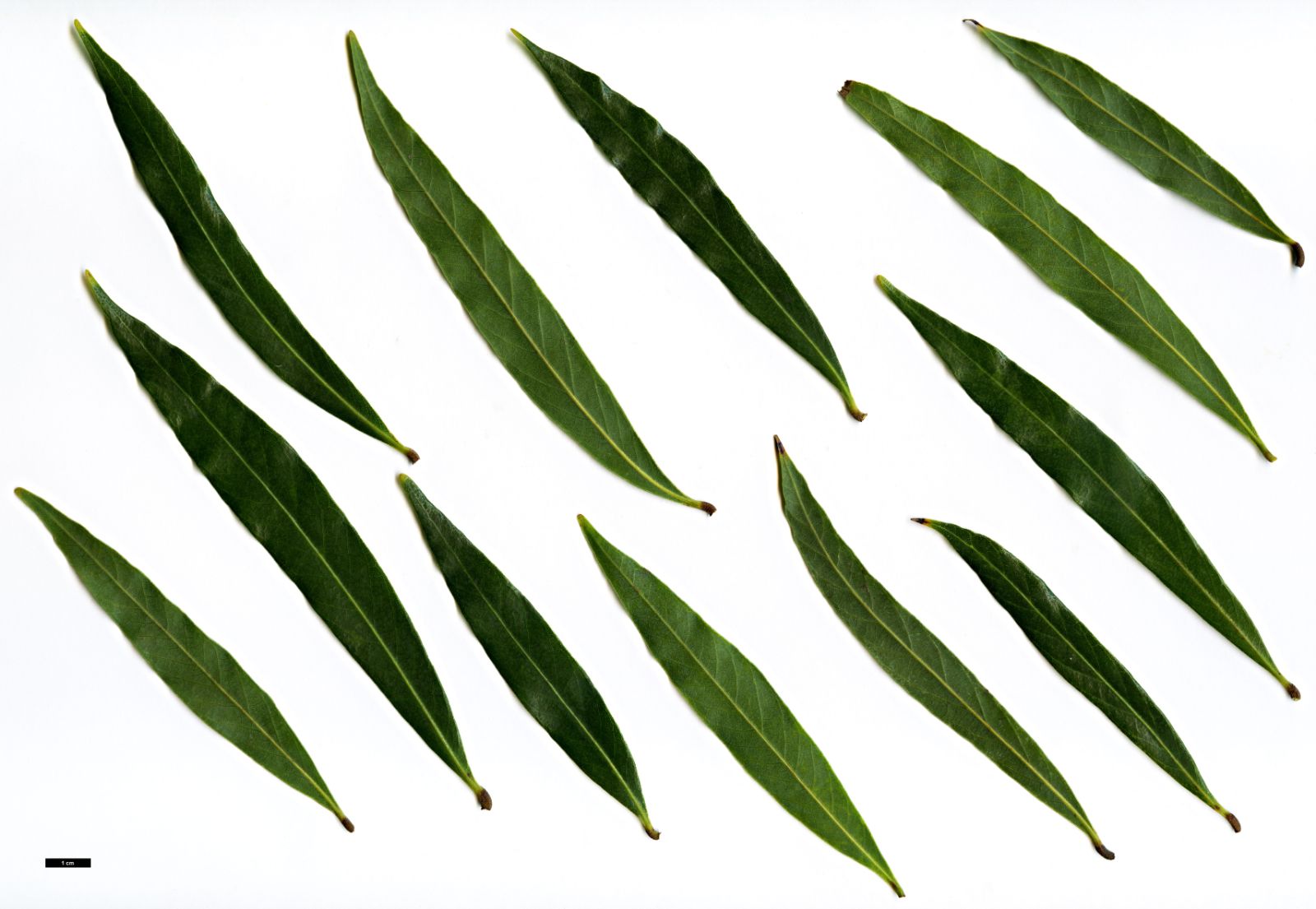Quercus bambusifolia
Sponsor
Kindly sponsored by
The Trees and Shrubs Online Oak Consortium
Credits
Allen Coombes & Roderick Cameron (2022)
Recommended citation
Coombes, A. & Cameron, R. (2022), 'Quercus bambusifolia' from the website Trees and Shrubs Online (treesandshrubsonline.
Genus
- Quercus
- Subgen. Cerris, Sect. Cyclobalanopsis
Common Names
- 竹叶青冈 (zhu ye qing gang)
- Sồi lá tre
- Bamboo-leaved oak
Synonyms
- Quercus neglecta (Schottky) Koidz.
- Cyclobalanopsis neglecta Schottky
Other taxa in genus
- Quercus acerifolia
- Quercus acherdophylla
- Quercus acrodonta
- Quercus acuta
- Quercus acutifolia
- Quercus acutissima
- Quercus afares
- Quercus affinis
- Quercus agrifolia
- Quercus alba
- Quercus aliena
- Quercus alnifolia
- Quercus aquifolioides
- Quercus arizonica
- Quercus arkansana
- Quercus aucheri
- Quercus augustini
- Quercus austrina
- Quercus × auzendei
- Quercus baloot
- Quercus baronii
- Quercus bicolor
- Quercus brantii
- Quercus buckleyi
- Quercus canariensis
- Quercus canbyi
- Quercus candicans
- Quercus castanea
- Quercus castaneifolia
- Quercus cerris
- Quercus chenii
- Quercus chrysolepis
- Quercus coccifera
- Quercus cocciferoides
- Quercus coccinea
- Quercus conspersa
- Quercus crassifolia
- Quercus crassipes
- Quercus delavayi
- Quercus dentata
- Quercus deserticola
- Quercus dolicholepis
- Quercus douglasii
- Quercus dumosa
- Quercus durifolia
- Quercus eduardii
- Quercus ellipsoidalis
- Quercus emoryi
- Quercus engelmannii
- Quercus engleriana
- Quercus euboica
- Quercus eugeniifolia
- Quercus fabri
- Quercus faginea
- Quercus falcata
- Quercus floribunda
- Quercus frainetto
- Quercus franchetii
- Quercus fruticosa
- Quercus fusiformis
- Quercus gambelii
- Quercus garryana
- Quercus geminata
- Quercus georgiana
- Quercus germana
- Quercus gilliana
- Quercus gilva
- Quercus glabrescens
- Quercus glauca
- Quercus graciliformis
- Quercus gravesii
- Quercus griffithii
- Quercus grisea
- Quercus guyavifolia
- Quercus hartwissiana
- Quercus hemisphaerica
- Quercus × hispanica
- Quercus hondae
- Quercus hypargyrea
- Quercus hypoleucoides
- Quercus ilex
- Quercus ilicifolia
- Quercus imbricaria
- Quercus incana
- Quercus infectoria
- Quercus insignis
- Quercus ithaburensis
- Quercus kelloggii
- Quercus × kewensis
- Quercus kiukiangensis
- Quercus laceyi
- Quercus laevis
- Quercus lamellosa
- Quercus lanata
- Quercus lancifolia
- Quercus laurifolia
- Quercus laurina
- Quercus × leana
- Quercus leucotrichophora
- Quercus × libanerris
- Quercus libani
- Quercus lobata
- Quercus lobbii
- Quercus lodicosa
- Quercus longinux
- Quercus longispica
- Quercus look
- Quercus × ludoviciana
- Quercus macranthera
- Quercus macrocalyx
- Quercus macrocarpa
- Quercus macrolepis
- Quercus marilandica
- Quercus mexicana
- Quercus michauxii
- Quercus mongolica
- Quercus monimotricha
- Quercus montana
- Quercus morii
- Quercus muehlenbergii
- Quercus myrsinifolia
- Quercus myrtifolia
- Quercus nigra
- Quercus × numidica
- Quercus oblongifolia
- Quercus obtusata
- Quercus oglethorpensis
- Quercus oxyodon
- Quercus pagoda
- Quercus palmeri
- Quercus palustris
- Quercus pannosa
- Quercus parvula
- Quercus petraea
- Quercus phellos
- Quercus phillyreoides
- Quercus planipocula
- Quercus poilanei
- Quercus polymorpha
- Quercus pontica
- Quercus prinoides
- Quercus pubescens
- Quercus pyrenaica
- Quercus rehderiana
- Quercus reticulata
- Quercus robur
- Quercus rotundifolia
- Quercus rubra
- Quercus rugosa
- Quercus rysophylla
- Quercus sadleriana
- Quercus salicina
- Quercus sartorii
- Quercus × schneideri
- Quercus schottkyana
- Quercus semecarpifolia
- Quercus senescens
- Quercus serrata
- Quercus sessilifolia
- Quercus setulosa
- Quercus shumardii
- Quercus sinuata
- Quercus spinosa
- Quercus stellata
- Quercus stenophylloides
- Quercus suber
- Quercus subspathulata
- Quercus tarokoensis
- Quercus tatakaensis
- Quercus texana
- Quercus tomentella
- Quercus trojana
- Quercus tungmaiensis
- Quercus turbinella
- Quercus × turneri
- Quercus undulata
- Quercus utahensis
- Quercus utilis
- Quercus uxoris
- Quercus variabilis
- Quercus velutina
- Quercus virginiana
- Quercus vulcanica
- Quercus warburgii
- Quercus wislizenii
- Quercus xalapensis
Tree to 20 m tall up to 80 cm diameter. Shoots purplish, silky hairy when young becoming glabrous. Leaves evergreen, leathery, often clustered at the ends of the shoots, narrow elliptic to narrow lanceolate, to 11 × 2 cm, tapered to the base, bluntly pointed to rounded at the tip, margin entire or with a few small teeth towards the apex, lateral veins usually 12 or less on each side. Leaves red when young, becoming dark green above, glaucous beneath and glabrous on both sides when mature. Infructescence short, to 1 cm or less, fruits usually solitary, nearly sessile. Cupules saucer-shaped to hemispherical, to 1 × 1.8 cm, with 5–6 rings of scales. Acorns obovoid to ellipsoid, to 2.5 × 1.7 cm, only the base or up to about 1/3 enclosed in the cup and ripening the first year. (Strijk 2018).
Distribution China Guangdong, Guangxi, Hainan, Hong Kong Vietnam North
Habitat On ridge tops and slopes in mature or primary tropical and subtropical evergreen forests at 500–2300 m.
USDA Hardiness Zone 9
RHS Hardiness Rating H3
Conservation status Endangered (EN)
Taxonomic note Not to be confused with Quercus bambusifolia Fortune, an invalidly published name and synonym of Q. myrsinifolia.
Quercus bambusifolia has a restricted and scattered distribution in Hong Kong’s forests where it has been planted for forest restoration (Zeng & Fischer 2020). This species has often been confused with, and regarded as a synonym of, Q. myrsinifolia, which differs in its broader, more distinctly pointed and toothed leaves with longer petioles.
A plant in the Temperate House at Kew is a propagation of the original that grew there for many years; it had to be removed during the recent renovation. It was 3.5 m tall in 2021 (S. Taylor pers. comm.). Propagations from the original were also distributed to other gardens, including Yorkshire Arboretum (where it failed to survive a year, J. Grimshaw pers. comm. 2022) and Tresco Abbey Gardens in the Isles of Scilly, UK (A. Hall pers. comm. 2021); there is no record that any survived. A plant was recorded as planted at Caerhays in the 1920s but has since died and its identity is uncertain (C. Williams pers. comm. 2021). The only other plant of this species found in cultivation was planted at RBG Melbourne, Australia in 2000 and reached 3.5 m × 6 cm with a spread of 2 m (C. Carroll pers. comm. 2021).
Described in 1857 by Henry Fletcher Hance, a British diplomat who devoted his spare time to the study of Chinese plants. In the original publication by Seemann (1857) it was listed as a synonym of Q. salicina, but the accompaying illustration labelled Q. bambusifolia Hance is considered a valid publication of the name. The common name in China, where the species is known as Cyclobalanopsis neglecta, can be translated as ‘bamboo-leaf evergreen oak’; this is the same meaning as the vernacular name in Vietnamese. The epithet implies a similarity of the leaves to those of a species of the bamboo genus Bambusa.

